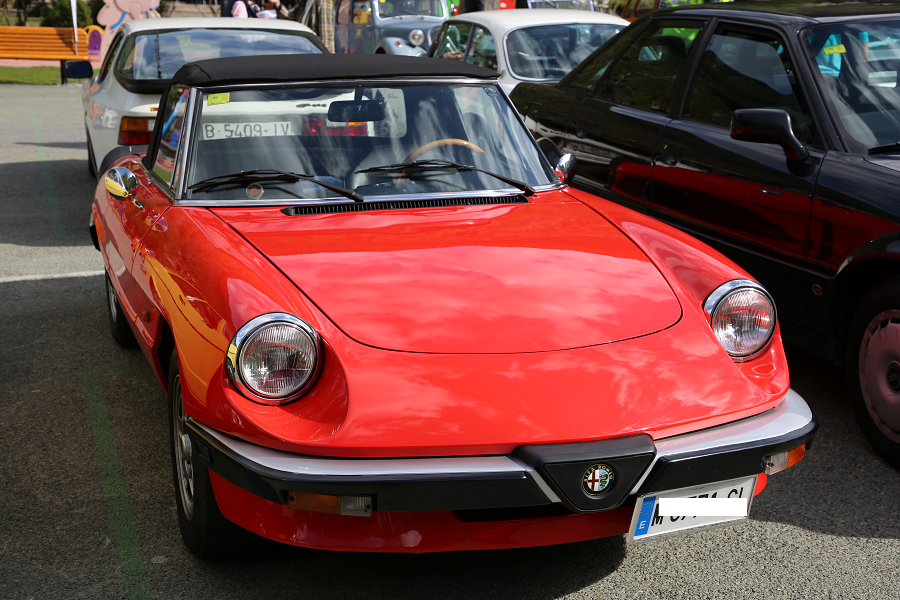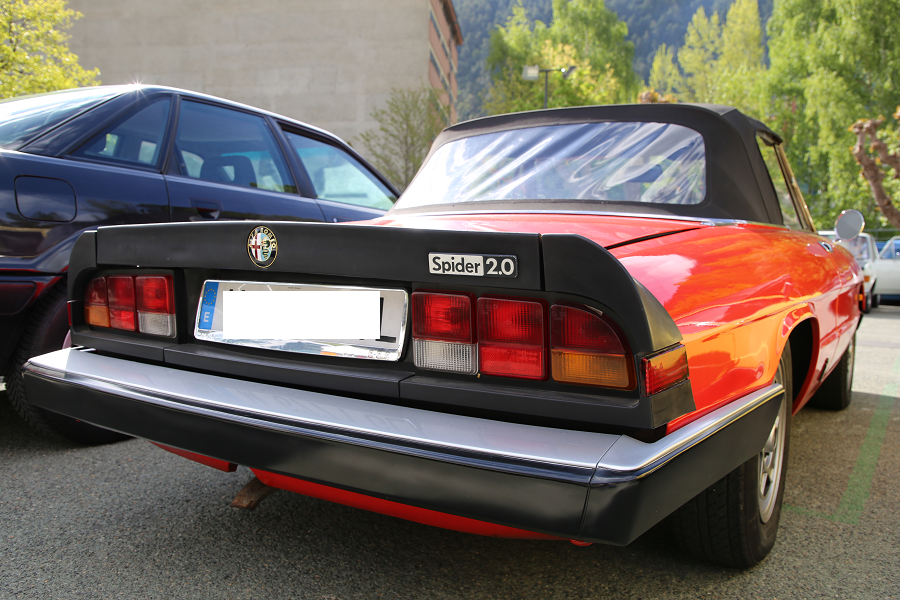Alfa Romeo Spider: red cabriolet 2.0
The Alfa Romeo Spider (105/115 series) is a two-seater, front-engined, rear-drive roadster manufactured and marketed by Alfa Romeo from 1966 to 1994 in four distinct generations, or “series”, each with modifications ranging from modest to extensive.
As successor to the Giulia Spider, the Spider remained in production for almost three decades. The first three series were assembled by Pininfarina in Grugliasco and the fourth series in San Giorgio Canavese. The last Spider of that series was manufactured in April 1993 — the last rear-wheel drive Alfa Romeo before the Alfa Romeo 8C Competizione of 2007.
In 2012, FCA Italy and Mazda studied the possibility of jointly developing a new Spider for 2015 based on the Mazda MX-5 platform. Ultimately, FCA and Mazda chose to manufacture a modern interpretation of the Fiat 124 Sport Spider rather than reviving the Alfa Romeo Spider.
Series 3 (1982/83–1989/90)
The Series 3 Spider debuted in North America for the 1982 model year with the introduction of 2.0 litre Bosch electronic fuel injection to replace the SPICA mechanical fuel injection.
The Spider received a further styling revision in 1983, with introduction of black rubber front and rear bumpers, a front bumper incorporating the grille, a small soft rubber spoiler added to the rear kammback, and various other minor mechanical and aesthetic modifications. The 1600 car (never available in North America) dropped the “Junior” name.
The Quadrifoglio Verde (Green Fourleaf Clover) model was introduced in 1986, with many aesthetic tweaks, including sideskirts, mirrors, new front and rear spoilers, hard rubber trunk mounted spoilers with integral third stoplight, unique 15″ alloys and optional removable hardtop. Different interior trim included blood red carpets and gray leather seats with red stitching.
The QV was offered in only three colours: red, silver and black. It was otherwise mechanically identical to the standard Spider Veloce model, with a 2.0 L (1,962 cc) DOHC 2 valves per cylinder four-cylinder engine, fuel fed by twin two-barrel 40DCOM4/5 Weber carburetors in Europe producing 128 PS (126 bhp; 94 kW) at 5400 rpm and 178 N⋅m (131 lbf⋅ft) at 4000 rpm of torque; while in North American models retained the Bosch L-Jetronic fuel injection introduced for the 1982 model year except that the VVT mechanism was now L-Jet activated and five-speed manual transmission.
The interior received a new center console, lower dash panels (to meet U.S. regulations) and a single monopod gauge cluster (with electronic gauges). For the North American market a model marketed as the Graduate acknowledged the model’s appearance in the 1967 film, The Graduate, starring Dustin Hoffman.
The Graduate was intended as a less expensive entry-level model with the same engine and transmission as the Quadrifoglio and Veloce, but with steel wheels, manual windows, vinyl seats, and vinyl top. Air conditioning and a dealer-installed radio were the only options. The Graduate arrived in 1985 in North America and continued until 1990.
Minor changes occurred from 1986 to 89, including new paint colors, a center high mount stop lamp (CHMSL) midway through 1986 for North American models, a move away from the brown carpet and new turn signal levers.
To comply with federal passive safety standards, a subset of Model Year 1988 examples featured automatic seatbelts with the shoulder belts’ internia reel retractors mounted behind and between the front seats, and routed through guides mounted on the inboard shoulder of the upper seat backs.












